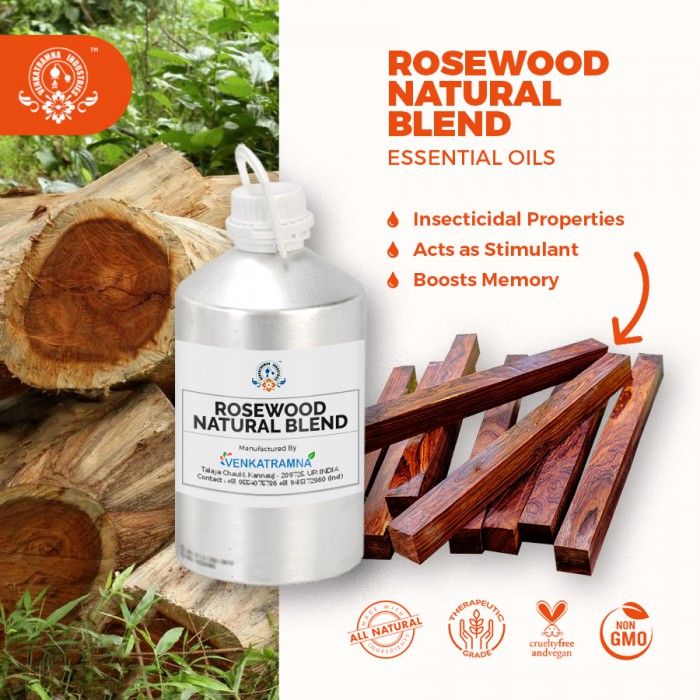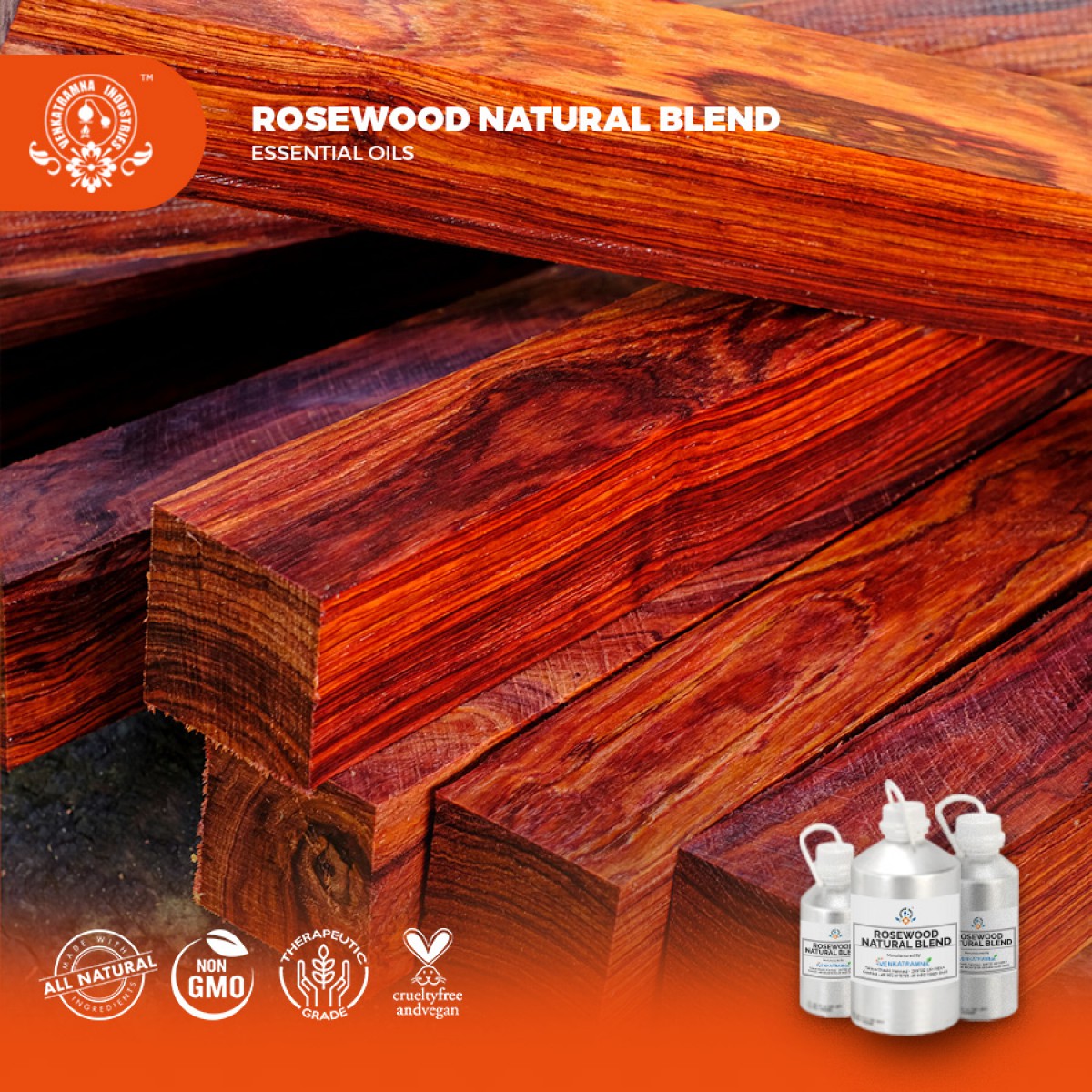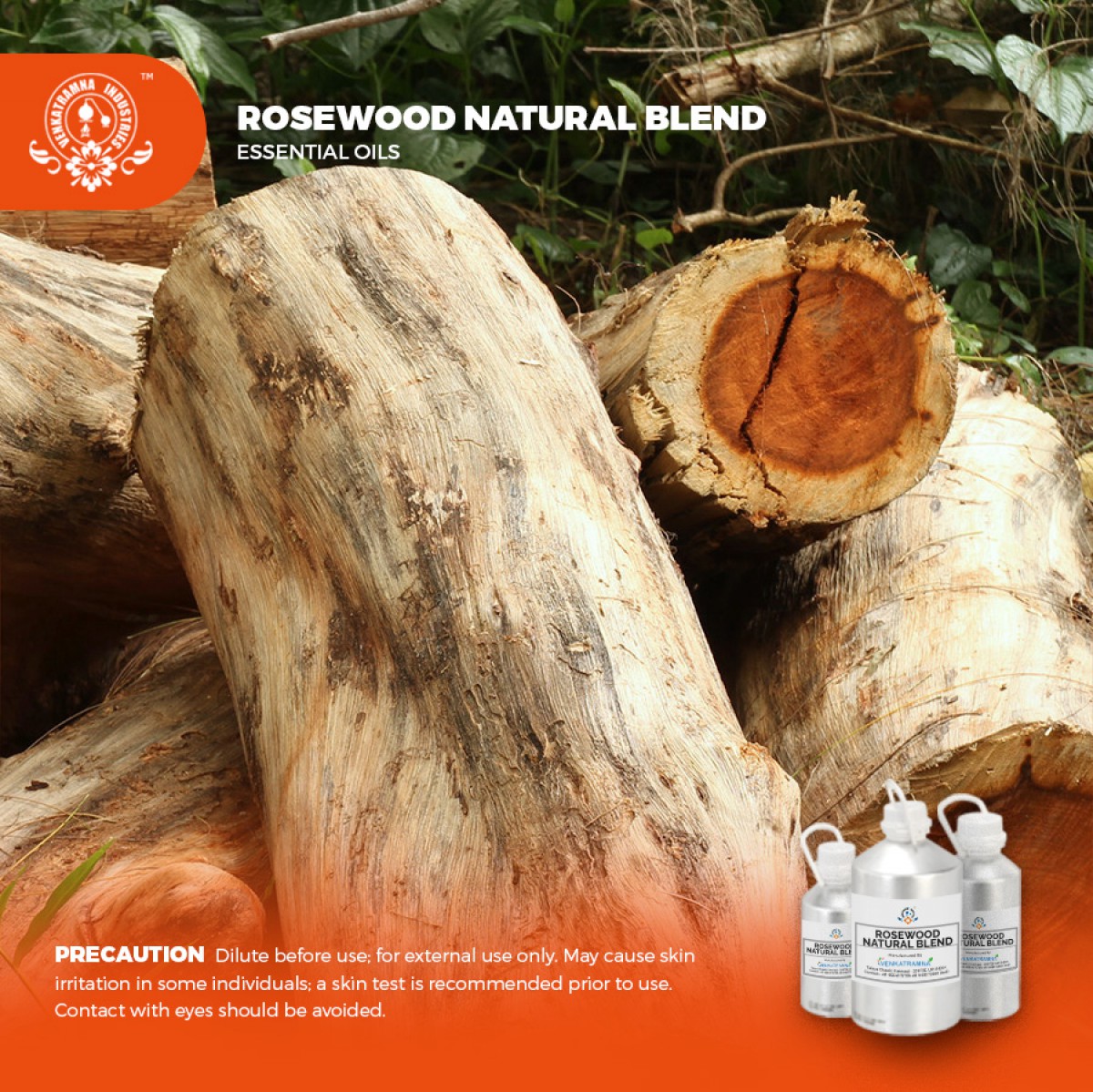Botanical Name: Aniba amazonica Common name: Rosewood Plant family Read More
|
Botanical Name: |
Aniba amazonica |
|
Common name: |
Rosewood |
|
Plant
family: |
Lauraceae |
|
Genus: |
Aniba |
|
Appearance/Color: |
A thin, clear, colorless to pale yellow liquid. |
|
Odor: |
warm and woody scent, though sweeter and slightly floral |
|
Blends With: |
Orange, Bergamot, Neroli, LIme, Lemon, Grapefruit,
Lavender, Jasmine and Rose. |
|
Origin: |
Canada |
|
Source: |
Wood |
|
Method
of Extraction: |
Steam Distillation |
Rosewood is a commercially
valuable tree, whose essential oil is in much demand industrially all of which
emit a sweet, rose-like scent when cut or sanded. The wood of these trees is
prized throughout the world for its remarkable coloration and density. Certain
species of rosewood have been in such demand that they are now threatened with
extinction and are heavily protected by international laws. In addition,
plantations may be a means to reducing the pressure of exploitation of natural
rosewood populations. Management of planted trees is the only way to meet the
demand for this forest product and guarantee the conservation of this species
in its natural habitat.
DISCLAIMER
The complete range of conditions
or methods of use are beyond our control therefore we do not assume any
responsibility and expressly disclaim any liability for any use of this
product. Information contained herein is believed to be true and accurate however,
all statements or suggestions are made without warranty, expressed or implied,
regarding accuracy of the information, the hazards connected with the use of
the material or the results to be obtained from the use thereof. Compliance
with all applicable federal, state, and local laws and local regulations
remains the responsibility of the user.
The FDA has not evaluated the
statements on this website. No claims are made by Venkatramna Industries as to
the medicinal value of any products from vriaroma.com or by us. The information
presented here is for educating our customers about the traditional uses of
essential oils and is not intended to diagnose, treat, cure, or prevent any
disease. You are responsible for understanding the safe application of these products.
If you have any questions, please call or email us for further information.
As per NAHA guidelines, New Directions Aromatics
(NDA) does not recommend the ingestion of essential oils. It is imperative to
consult a medical practitioner before using Essential Oils for therapeutic
purposes. Pregnant and nursing women and those taking prescription drugs are
especially advised not to use this product without the medical advice of a
physician. The oil should always be stored in an area that is inaccessible to
children, especially those under the age of 7.
Rosewood has a high oil content
throughout the wood, which can sometimes cause issues in gluing the wood. Most
finishes work beautifully on the rosewood and can really intensify the contrast
and colors of the wood. Rosewood is also a tone wood, producing a bright and
clear tone. Rosewood oil is steam distilled from the wood of the
tree. This tree grows in Brazil and is mostly used commercially for the wood!
It is unique oil that can be hard to find in therapeutic quality.
The rosewood oil has a
characteristics aroma and is a long-established ingredient used in perfumes,
fragrances and soaps. Linalool is their major constituent (80-90%) which can be
transformed into various derivatives of value to the flavor and fragrance
industries.
COMMON
USAGE
·
Relieves depression
·
Analgestic properties
·
Antiseptic
·
Deodorant
·
Aphrodisiac
·
Boosts memory
·
Insecticidal properties
·
Acts as stimulant
Ingredients:
|
S. No |
Key Constituents |
Strength (%) |
|
1 |
Linalool |
82.3-90.3 |
|
2 |
a-terpineol |
0.5-5.4 |
|
3 |
(Z)-linalool oxide |
1.5 |
|
4 |
(E)-linalool oxide |
1.3 |
|
5 |
1,8-cineole |
0.2-2.3 |
Safety Summary
·
Hazards: Not Known
Organ Specific Effects
·
Acute toxicity: No Data Available
·
Skin corrosion/irritation: May be
irritating to skin.
·
Serious eye damage/irritation: No Data
available.
·
Germ cell mutagenicity: Not specified
·
Carcinogenicity: No Data Available.
·
Reproductive toxicity: Not specified
·
STOT-single exposure: Not specified
·
STOT-related exposure: Not specified
·
Aspiration hazard: Not specified
·
Information on the likely routes of exposure:
Skin/scalp contact.
·
Symptoms related to the physical, chemical,
and toxicological characteristics: None known. Irritation of the eye if
exposed: Redness of the skin if irritated.
·
Toxicity
o
Acute fish toxicity: LC50 / 96 HOUR – No data
available
o
Toxicity to aquatic plants – No data available
o
Toxicity to microorganisms – No data available
o
Toxicity threshold – No data available
·
Persistence and degradability:
Biodegradation is expected
·
Bio-accumulative potential: Bioaccumulation
is unlikely
·
Mobility in soil: Unknown
Avoid exposure to marine environments and waterways





 MSDS-Rosewood.pdf
MSDS-Rosewood.pdf




